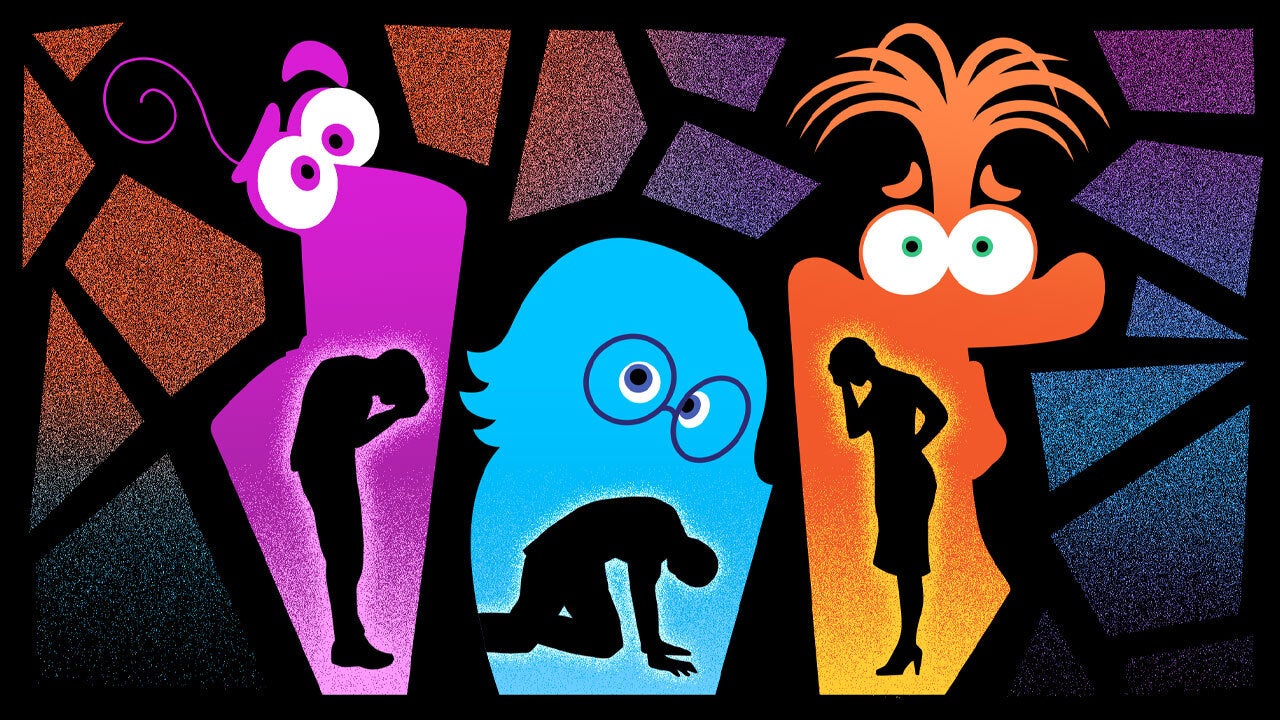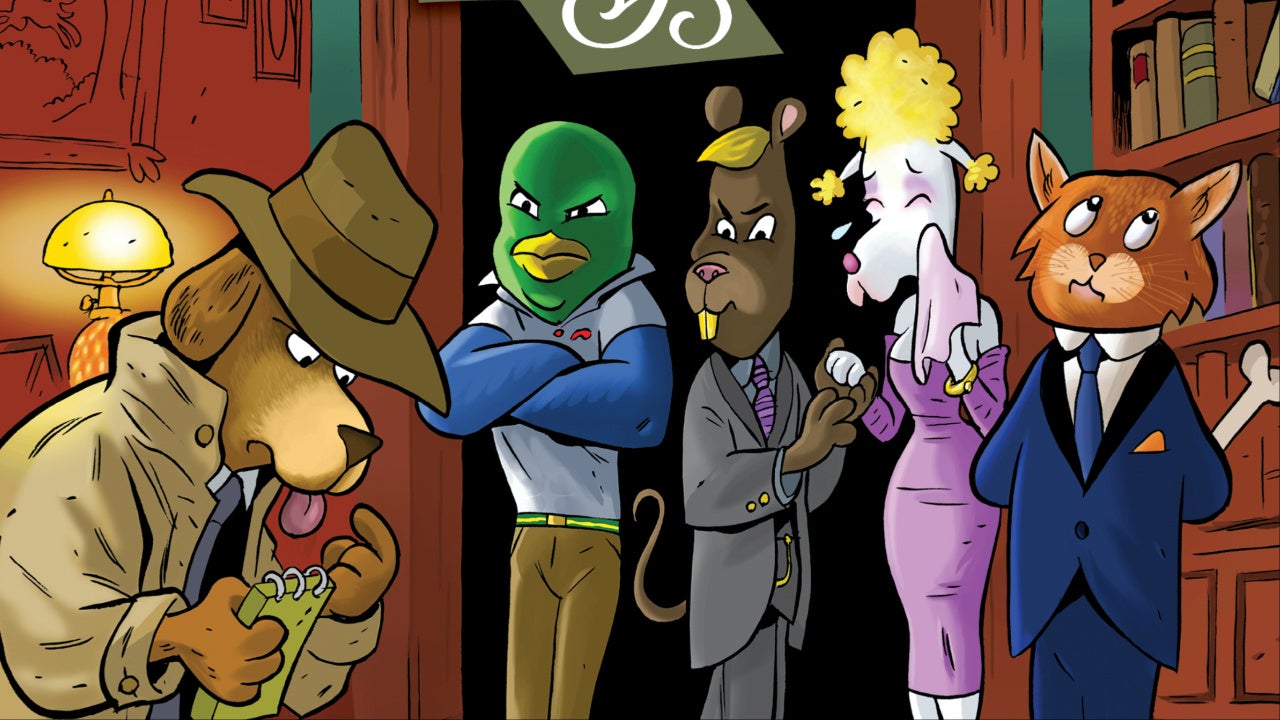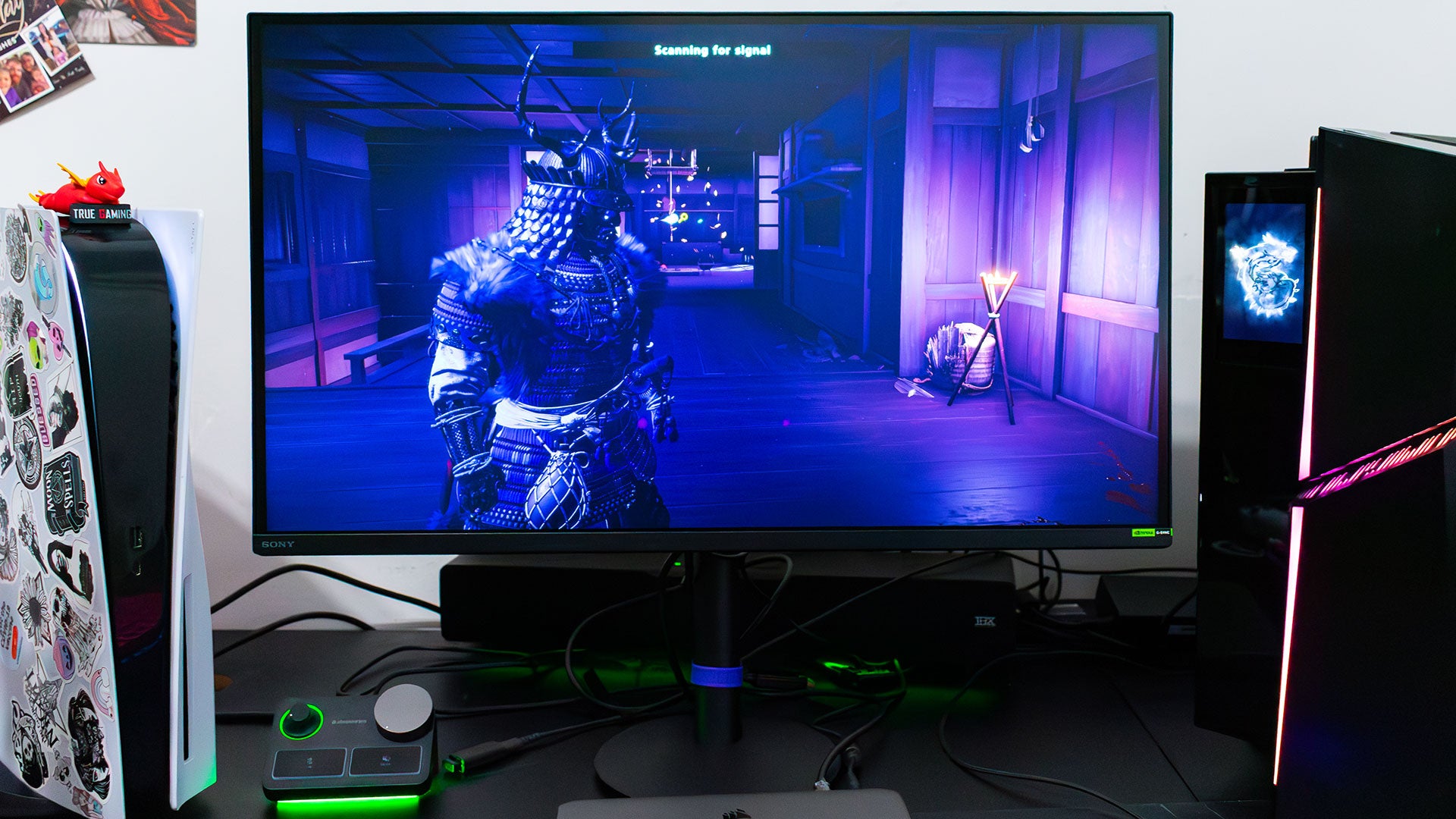From the outside, Pixar’s narrative is a clear story of redemption: after an undeniably tough few years – battered by COVID-19 theater shutdowns, two Hollywood strikes, and a couple of box office disappointments – the studio needed a win, and that win was Inside Out 2.
The sequel to Pete Docter’s Oscar-winning 2015 blockbuster is Pixar’s biggest hit in years, and it’s not even close. Inside Out 2 isn’t just Pixar’s highest-grossing film. It’s the highest-grossing animated movie of all time, sitting at a jaw-dropping $1.6 billion at the worldwide box office. It’s a stunning turn of events when considering the studio’s aforementioned recent struggles. And who doesn’t love a redemption story, especially when a brand as beloved and nostalgic as Pixar is involved?
But for many of the workers behind Inside Out 2, its record-shattering success is more than a little bittersweet. As reported earlier this year, the studio began layoffs affecting 175 workers, or 14% of its staff, in May. And not only are laid-off employees unable to benefit from a bonus for Inside Out 2’s success – some are also recovering from what several sources describe as an “unprecedented” crunch surrounding Inside Out 2.
“I think for a month or two, the animators were working seven days a week,” one source says. “Ridiculous amounts of production workers, just people being tossed into jobs they'd never really done before… It was horrendous.”
IGN spoke to 10 former Pixar employees for this story under the condition of anonymity. They go into detail about the pains of the layoffs, the financial struggles those layoffs have left them with, and the details behind what one source calls “the largest crunch in the studio’s history." It’s a claim disputed by a senior executive at Pixar, who tells IGN that the crunch at the end of Inside Out 2 was no different from those on many other films from the studio. But the fact remains: there are many who feel like they rushed to give Pixar the hit it so desperately needed, and were hung out to dry.
“I would venture that at least 95% of the people that got laid off are financially f*cked right now,” one person says.
Outside of the financial strain of it all, sources also paint a picture of a studio that’s terrified to rock the boat, with some internally pushing to avoid LGBTQ themes, requiring edits to Inside Out 2. It’s a studio, they say, that’s overly reliant on Chief Creative Officer Pete Docter, stubbornly set in its ways, and setting its remaining team up for more crunch in its future films.
“The internal culture of Pixar right now is really rough,” one former employee says. “There is just an incredible amount of people who are like, ‘I can't do this anymore.’ “
Disney declined to comment for this story.

Like much of Hollywood, Pixar was massively affected by the COVID-19 lockdowns that hit movie theaters in March 2020. The last Pixar movie to be released theatrically before lockdown was Onward on March 6, 2020, though it would be made available on On Demand and Disney+ just a couple of weeks later as lockdown orders spread across the globe.
The next three Pixar movies – Soul, Luca, and Turning Red – were all released directly on Disney+, skipping theatrical runs entirely with the exception of a few international territories. Disney/Pixar was far from alone in its pains — every major studio struggled against the strains of the COVID-19 pandemic. But, when theaters did start opening back up in 2022, Pixar’s return to the big screen wasn’t the financial redemption it hoped for.
Lightyear was a well-publicized disappointment, closing out its box office run with just $226 million worldwide. While the next film, Elemental, did end up faring better with nearly $500 million worldwide, it had to rebound from what Pixar president Jim Morris admitted was a “disappointing” opening of just $29.5 million domestically. And according to one source, due to the profit-sharing model at Disney/Pixar, a movie has to cross $600 million to be considered profitable for Pixar, and it’s not seen as a true hit until that coveted $1 billion mark.
It all led to a situation where Inside Out 2, a sequel to arguably one of the most beloved animated movies ever, was seen as the film that could reverse the studio’s fortunes, making it what one source called “an all-hands-on-deck studio emergency.” It was rare, we’re told, to find someone who worked at Pixar in the past couple of years who didn’t contribute to Inside Out 2. One source points out that the credits for Inside Out 2 are longer than any other Pixar movie, given the amount of studio workers who were pulled in on it.
Some go so far as to say they believed Pixar would fall apart if Inside Out 2 wasn’t a runaway success. It was seen by many employees as “a life or death situation” for the studio.
“That was the pressure felt by everybody,” one source says. “‘We need this movie to succeed because we won't have a studio [otherwise].’ And that is the pressure that everybody felt the whole time. The whole time. Even now, I think people are gone, still feeling that pressure of like, ‘Oh my God, we did it. We did it.’ “
Whether or not Pixar was actually in danger isn’t confirmed. But, in a TIME interview just before the release of Inside Out 2 that, Docter said, “if this doesn't do well at the theater, I think it just means we're going to have to think even more radically about how we run our business.”
Plus, Inside Out 2 had many of the obstacles that the Pixar movies before it did, and even some that they didn’t. It was heavily impacted by 2023’s SAG-AFTRA strike, but as other films were delayed out of Summer 2024, Pixar was adamant about staying put. The unwillingness to delay the film persisted despite last-minute rewrites and the quiet expansion of Docter’s role on the film.
While Docter is publicly an executive producer of Inside Out 2, multiple sources say that he stepped in as uncredited co-director, working heavily alongside credited director Kelsey Mann. In some ways, that move made sense to many; Docter, after all, co-wrote and directed the first Inside Out, in addition to boasting directing and story credits on beloved Pixar movies like Up, WALL-E, and Toy Story.
“I mean, you saw the end result of that. [Inside Out 2] made a billion dollars at the box office,” one person says of Docter taking a larger role. “That was a direct result of Pete's involvement. Pete's a genius. Nobody can dispute this.”
In fact, many of the sources IGN spoke to generally don’t have particularly negative feelings toward Docter – it’s well known that, after all these years and a proven track record, he knows what he’s doing. But it’s also indicative of what some sources say is a “god-like worship” of the man in charge, a holdover from the days of ousted Chief Creative Officer John Lasseter. One source says the studio leans on Docter to an “unhealthy degree,” and it’s, partially, what leads to a situation like the crunch on Inside Out 2.
“You cannot do anything without Pete. Literally nothing,” one former employee says. “And that creates a bottleneck.”
For many, it’s also a symbol of Pixar holding fast to an internal culture that’s stubbornly set in its ways, with an aversion to bringing on new directors and voices. One source cites a period of time, between 2020 and the release of Lightyear, where the studio was more open to bringing in producers and creatives from outside its typical ranks, as well as greener filmmakers. Mann made his directorial debut on Inside Out 2, beginning development during that more experimental period in 2020.
That brief period of willingness to experiment, however, didn’t last. Particularly after Lightyear’s financial failure, sources say, Pixar lost the desire to take risks, either in its creative appointments or in its story decisions. As reported at the time, there were many reasons why Lightyear disappointed at the box office: a confusing spinoff concept, a new voice for Buzz, growing pains in going from Disney+ back to theatrical. Doctor even admitted that it prompted “a lot of soul-searching” at the studio, citing some of Lightyear’s conceptual and character issues.
But multiple sources say that Disney leadership internally put a large part of the blame for Lightyear’s financial failure on a same-sex kiss in the film, which was briefly removed then reinstated after an internal staff uproar. In a joint statement to Walt Disney Company leadership, LGBTQ workers and allies at Pixar said leadership was censoring “overtly gay affection” at a time where employees were also protesting the company’s response to Florida’s “Don’t Say Gay” bill.
“It is, as far as I know, still a thing, where leadership, they'll bring up Lightyear specifically and say, ‘Oh, Lightyear was a financial failure because it had a queer kiss in it,’” one source tells IGN. “That's not the reason the movie failed.”
Now, Docter largely uses the language of making “universal stories,” which to him means “something that's very homogenous that anyone can relate to,” one source says.
The apparent hesitance to touch on LGBTQ themes storylines in particular affected Inside Out 2’s development, according to several of our sources. Multiple people recall hearing about continuous notes to make Riley, the main character of both Inside Out movies, come across as “less gay,” leading to numerous edits that ramped up around September 2023 after the resolution of the WGA strike. Sources describe rumors that there was special care put into making the relationship between Riley and Val, a supporting character introduced in Inside Out 2, seem as platonic as possible, even requiring edits to the lighting and tone of certain scenes to remove any trace of “romantic chemistry.” One source describes it as "just doing a lot of extra work to make sure that no one would potentially see them as not straight."
It’s worth noting that Pixar released a short in 2015 that followed Riley’s first date with a boy. Still, many fans online started to call out queer-coding in Inside Out 2 from the moment the first trailer arrived. (Inside Out 2 spoiler to follow). The movie also teased a “Deep Dark Secret” that Riley was harboring throughout, only to reveal in the post-credits that the secret was that she once burned a hole in the carpet. Many fans, however, thought the reveal would be that Riley was actually grappling with her sexuality, and even felt “baited” over what it actually was.
“Mind you, Riley is not canonically gay,” one source says. “In the film, what you saw, nothing about Riley says that she is gay, but it is kind of inferred based on certain contexts. And so that is something that they tried to play down at multiple points.” Another source calls some leadership “uncomfortable” with queer themes at large, and the insistence on keeping those themes out of Inside Out 2 was “a big thing throughout” development.
All of this – the pressure, the creative bottlenecks, the story hesitations – led to a rush in the last few months of production on Inside Out 2, former employees say. Or, as one source puts it: “It was a shitshow.”

Part of the issue for those who worked on Inside Out 2, sources say, was a new internal methodology that Pixar leadership called “Long and Lean,” a workflow that was, in theory, supposed to give the studio "a longer runway to finish a project, but with less staff." But some sources feel it mostly gives the creative leads more time with the material, while roles like editors and artists are left to pick up the slack.
Elio, too, is hard to separate from the story surrounding Inside Out 2. The upcoming sci-fi adventure was originally slated to release on March 1, 2024, but was delayed to June 13, 2025 last fall. In a recent interview with The Wrap, which also quietly revealed that Madeline Sharafian and Domee Shi would be taking over directing duties from Adrian Molina, Docter said the delay was largely due to the actors’ strike. But several of IGN’s sources say it was also due to major story changes, leading to a grind on that film even before many of its artists were moved to work on Inside Out 2.
One source who had pleasant experiences on their prior projects reports feeling a marked shift when they were on Elio: “It was rushed work, paranoid work, paranoid leadership, mixed messaging,” the source says. “...You're just working 24/7. And so after awhile, your body just starts breaking down.”
As for Inside Out 2, one source claims the crunch started in earnest just after the WGA strike ended in late September 2023, and lasted all the way through the end of production. Some, one source says, were working on weekends for the last four months. While sources acknowledge that an increased workload isn’t uncommon at the end of any animated film (and, again, a senior Pixar executive says it wasn’t out of the ordinary), one also points to an “overall mismanagement of the show (Inside Out 2) in general.” There were, the source says, a larger amount of “last-minute” changes than usual, requiring tools to be developed on the fly.
“It was definitely rough,” they say. “Everybody, at least in my circles when we were talking, it was just kind of the sense of, ‘we just want to get it over with. We just want it to be finished and done and to not be looking at it anymore,’ which, I don't feel like is the best way to make a movie that everyone feels good about. There was definitely kind of a sense of ‘just push through it. We're just going to hit the finish line and get it over with.’”
The rush at the end of the production, too, was spread unevenly throughout Pixar. A couple of sources were largely unaffected; others found it unusual how long they had to wait to get their work while watching their colleagues push through grueling hours. “It was odd to see some people on fire and some people with nothing to do,” one source recalls.
It got to a point where some had to wait so long while others crunched, one source says, that visual effects artists were starting their shots when the shots weren’t even fully animated. It’s a practice that’s referred to as “working dirty” – essentially, doing a large chunk of work ahead of time that you know will likely be thrown out, on the off chance that it will be used.
Still, others are willing to give Pixar itself credit. Those who crunched were paid overtime, and workers were offered time off in return, although it could be hard to find time in the production schedule to take it. But, sources say, even with solid benefits and well-meaning team leaders, the production structure in place and the demands to meet the release timeline make for an untenable situation.
“They do take care of us when we do have aches and pains,” one source says of Pixar. “They throw everything at us to try to help. There's really great health benefits, mental health. So it's not like they're not trying and they're not offering things. But at the end of the day, I feel like the expectations and that ‘let's just crunch and get it done,’ but then it goes on for months and months, it’s not sustainable.”
Others worry that, due to Inside Out 2’s success, Pixar won’t have any motivation to change its bottlenecked systems. One recalls a recent company meeting where, citing Inside Out 2’s victory, Docter essentially expressed that they would replicate the system on Elio.
“I think people just kind of were like, ‘really?’ “ one source says. “You kind of killed everybody on Inside Out, and now you're wanting to do that with Elio?”
And, while not everyone crunched on Inside Out 2, what struck many of our sources is how many people who did were affected by the layoffs earlier this year.

At the very least, the fact that Pixar was having layoffs at some point wasn’t a huge shock to the staff. Employees were told layoffs would be happening at some point in January 2023, and Disney announced a “strategic realignment” that May that would include layoffs of 7,000 from the company at large. Seventy-five Pixar employees were laid off in June of that year. Those layoffs included Lightyear director Angus MacLane, as well as Galyn Susman, the producer who became famous for saving Toy Story 2 after it was accidentally deleted from Disney’s servers.
Some sources expected more layoffs in September 2023, but theorize that those layoffs were pushed back due to the amount of work that still needed to be done on Inside Out 2 after the summer’s strikes.
“For a good year, year and a half, everyone was on edge,” one source says. “I think that's maybe why they had their heads down and just worked as hard as they could.”
Instead, the layoffs of 14% of Pixar’s workforce began in late May, after much of the work on Inside Out 2 was complete. The layoffs, Docter said in a recent interview with The Ankler, were “another thing that made this year really weird. Unfortunately now Disney has come to the point where they realized, you know what? The amount we have to spend to do the quality we do doesn't make sense.”
Though expected, the news was a blow for many employees, at least in part because they would not receive a bonus for Inside Out 2’s eventual success. To qualify for the bonus, an employee would have to have worked on a project for a certain amount of time (which, as noted, was most of Pixar at the time), and be employed at the time when the bonuses are distributed.
“To be told by our HR reps that we were not going to qualify for that bonus felt like an ultimate ‘f*ck you’ from Disney,” one former employee says.
One of the major reasons that bonus was important, multiple sources say, is because Pixar’s base pay for many positions is considered low for Emeryville, Calif., an expensive Bay Area city where many of them were required to live. It’s worth noting, too, that unlike much of California’s animation business, Pixar employees are not unionized under The Animation Guild (TAG). The short explanation for why that is: Pixar opened as an independent studio in Emeryville, Calif., in 1986. Its location put it outside of TAG’s jurisdiction of Los Angeles County, making it non-union from the start. Being acquired by Disney in 2006 did not automatically place Pixar under the TAG umbrella, even though Walt Disney Animation workers are represented by the union. Pixar workers could, in theory, join TAG, although it would take a formal organizing effort and an election.
Still, currently, Pixar remains outside of union coverage, and without union rates.
“And the way they kind of excuse that is with these bonuses. They're like, ‘yeah, we pay less, but here's this huge bonus you might get,’ “ one source says. Other sources say it’s something that frequently comes up when talking to Pixar’s recruiters and in offer letters.
“We work all year for that bonus,” another says. “That is what partially makes working at Pixar worth it… we depend on that.”
Depending on a project’s success, along with other factors like whether or not it came in under budget, those bonuses can range from one week to ten weeks’ pay. Given Inside Out 2’s record-breaking success, the bonus will likely be on the higher end for those eligible to receive it. Many employees, sources say, were counting on the bonus for Inside Out 2, especially since the bonuses were lower for Elemental and nonexistent for Lightyear.
“If they had just tacked on something to the severance of those who were being let go, that was like, ‘oh, here's a prorated bonus,’ it feels like something that could have been done out of kindness, to me,” one person says. “I think it would've gone a very long way in their claims of trying to be compassionate and kind to colleagues that have to leave.”
“It really crushed a lot of us,” another adds. “...When we were told the day we were laid off that it (the bonus) is only for active employees, I sobbed.”
Sources describe it as yet another gut punch when the news of the layoffs came down.
“The day that the layoffs happened was like a funeral. There was weeping and crying in the atrium,” one source says. “There are images from that day that are going to stay with me for quite a long time.”
When the list of those who were laid off from the studio started to form, more confusion and frustration abounded. For one, at the time, Pixar had said it was refocusing away from streaming content and back to theatrical films as the reason for the cuts, having staffed up for the former during the pandemic. In an email to staff on the day of the layoffs, Morris wrote, "I have spoken to you many times over the last year about our pending move away from series production for Disney+, the return to our focus on feature films, and the reduction in our team that would accompany that.”
But some of those affected by the layoffs, sources say, had nothing to do with content produced for Disney+, with the layoffs reaching departments that only worked on theatrical. Additionally, no one on the executive team was let go.
“It was just a great group of people that got laid off, to be honest,” said one person. “It was almost like they laid off so many of the really loyal, nice, lovely, talented people of Pixar.”
“Disney invested $1.5 billion in Fortnite,” one former employee laments. “One percent of that 1.5 billion would've saved all our jobs.”
The way the layoffs unfolded, too, left those affected scrambling. Specifically, Pixar locked affected employees out of the network the day of the layoffs, cutting off access to work materials for demo reels, personal files, benefit information, and more. Even key card access was restricted outside of normal work-week hours, and laid-off employees were asked not to visit the office to pick up their belongings during those times so as to not make the remaining employees feel awkward.
While this behavior might be common at other companies, it was not standard practice at Pixar, multiple sources say, and left many of those affected feeling “suddenly exiled” and “blindsided.” Pixar did establish a system where laid-off employees could request material for their reels, but perhaps the shut-out was more significant for symbolic reasons. One former employee remembers crying at the gates of the studio, feeling “completely shut out physically, not just network-wise, just physically shut out without any communication.”
“There was no one from HR or anything supporting us or guiding us,” another says. “It was all mixed messaging, and that was super frustrating and emotional and just adding to the whole stress of all of it.”
In the meantime, the former employees were left to watch as Inside Out 2 became a runaway global success. One person there at the time says the studio felt “out of touch” with how they celebrated its blockbuster box office while those who worked on it were on the way out. Another laid-off employee recalls getting asked by industry colleagues about their potential bonus, given Inside Out 2’s now-hit status, only to relay that they wouldn’t be getting one at all.
“Yeah, it's bittersweet,” one person who worked on Inside Out 2 says of watching it climb the charts. “I mean, it's like watching an ex be with a movie star, basically. It's like, ‘I'm happy for you, but why?’ “

Those mixed emotions are something that’s uniform across everyone IGN spoke to. One even points out the irony of working on a movie about mental health, only to have their health insurance – and thus, their therapy and other mental health benefits – stripped away.
Some can’t even bring themselves to see Inside Out 2, knowing how many of Pixar’s former employees are struggling to get by. There’s a painful irony, sources say, in the conversations had in the wake of the layoffs. While some are thrilled to have their names attached to the highest-grossing animated film in history, they’re juggling those feelings with not knowing how they’ll pay their bills the next month. Many laid-off employees, sources say, have resorted to moving out of the Emeryville area as they navigate their next moves.
It’s a situation where Inside Out 2’s focus on grappling with various conflicting emotions is unfortunately fitting.
“Just to watch that movie do so well in theaters, it’s great,” one former employee says. “I really am happy for all of us at Pixar that want to see that. But for those of us who got laid off, it is really bad for some of us who just don't know what we're going to do now.”
“I was a fan before I worked there, so it's really hard to see how the sausage gets made now and be like, ‘oh, can I ever just be a fan again?’ I don’t know,” another adds.
Others have concerns about the culture at Pixar, and the storytelling there leaning more toward the “universal stories” directive, especially with the apparent aversion to LGBTQ themes. “A lot of us accepted the fact that we may never see a major gay character in a Pixar movie,” says one source.
But at the heart of it, many of the sources IGN spoke to are just worried for the future of a studio many of them grew up idolizing, and the employees that are still left there. Multiple sources say there’s a particularly low morale among remaining employees, especially as more work on Elio looms. Pixar, they argue, has taken all the wrong lessons from Inside Out 2’s blockbuster success, all while being set in unsustainable work processes. One person calls the studio “rudderless,” saying it got “very lucky” on Inside Out 2.
“They learned nothing. And that's the feedback I'm still getting when I'm just reaching out to [current employees],” another source says. “...Right now, everyone’s on Elio. Things are exactly the same, how they were before. Everybody’s working crazy hours to get Elio fixed.”
“I think the biggest feeling that I heard around the studio before the layoffs and now even post-layoffs, talking to people who are still there, is everybody feels like the executives are really just acting in a fear-based way,” another adds. “Everything is to preserve their own power in their own jobs… So I think morale is really low because people no longer trust that they're being led with their best interests at heart.”
If there are any silver linings to be had, some say they’re still fans of the studio because of the friends they still have there, who pour their hearts into the work. Some stress, again, that their resentments don’t even lie with Docter or Morris in particular, whose hands are likely tied on a lot of the problems.
But still, as Inside Out 2 heads to even more visibility on Disney+ later this month, something of a call for justice for those who were laid off remains.
“We love to tell stories. That's our career. But when your work is put out there, you kind of want to benefit from the strength of that,” one source says. “People need to be compensated for that.”
Alex Stedman is a Senior News Editor with IGN, overseeing entertainment reporting. When she's not writing or editing, you can find her reading fantasy novels or playing Dungeons & Dragons.










